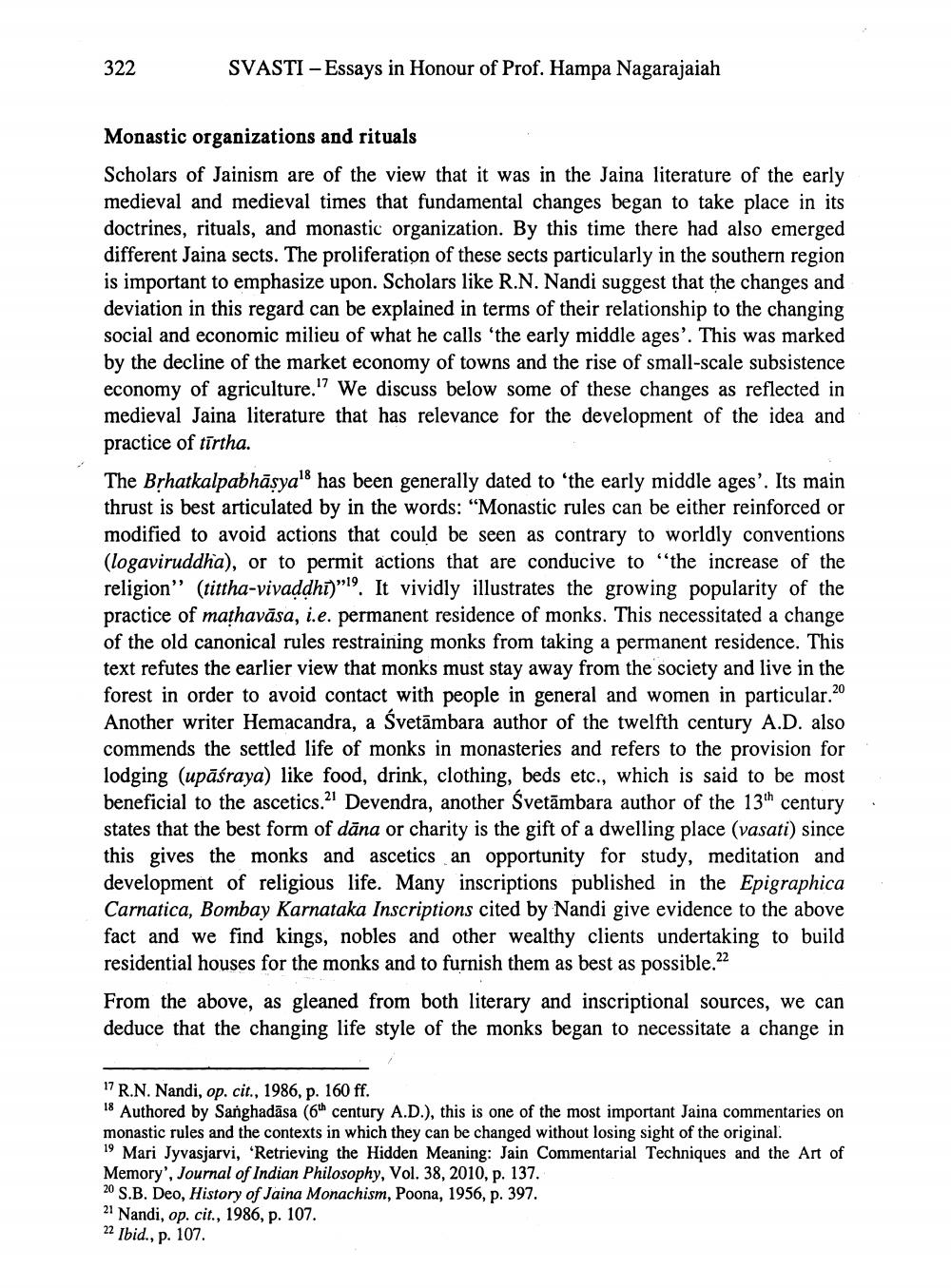________________
322
SVASTI - Essays in Honour of Prof. Hampa Nagarajaiah
Monastic organizations and rituals Scholars of Jainism are of the view that it was in the Jaina literature of the early medieval and medieval times that fundamental changes began to take place in its doctrines, rituals, and monastic organization. By this time there had also emerged different Jaina sects. The proliferation of these sects particularly in the southern region is important to emphasize upon. Scholars like R.N. Nandi suggest that the changes and deviation in this regard can be explained in terms of their relationship to the changing social and economic milieu of what he calls 'the early middle ages'. This was marked by the decline of the market economy of towns and the rise of small-scale subsistence economy of agriculture. We discuss below some of these changes as reflected in medieval Jaina literature that has relevance for the development of the idea and practice of tīrtha. The Brhatkalpabhāsyal has been generally dated to the early middle ages'. Its main thrust is best articulated by in the words: "Monastic rules can be either reinforced or modified to avoid actions that could be seen as contrary to worldly conventions (logaviruddha), or to permit actions that are conducive to the increase of the religion" (tittha-vivaddhi)". It vividly illustrates the growing popularity of the practice of mathavāsa, i.e. permanent residence of monks. This necessitated a change of the old canonical rules restraining monks from taking a permanent residence. This text refutes the earlier view that monks must stay away from the society and live in the forest in order to avoid contact with people in general and women in particular.20 Another writer Hemacandra, a Svetāmbara author of the twelfth century A.D. also commends the settled life of monks in monasteries and refers to the provision for lodging (upāśraya) like food, drink, clothing, beds etc., which is said to be most beneficial to the ascetics.21 Devendra, another Svetāmbara author of the 13th century states that the best form of dāna or charity is the gift of a dwelling place (vasati) since this gives the monks and ascetics an opportunity for study, meditation and development of religious life. Many inscriptions published in the Epigraphica Carnatica, Bombay Karnataka Inscriptions cited by Nandi give evidence to the above fact and we find kings, nobles and other wealthy clients undertaking to build residential houses for the monks and to furnish them as best as possible.22
From the above, as gleaned from both literary and inscriptional sources, we can deduce that the changing life style of the monks began to necessitate a change in
17 R.N. Nandi, op. cit., 1986, p. 160 ff. 18 Authored by Sanghadāsa (6th century A.D.), this is one of the most important Jaina commentaries on monastic rules and the contexts in which they can be changed without losing sight of the original. 19 Mari Jyvasjarvi, 'Retrieving the Hidden Meaning: Jain Commentarial Techniques and the Art of Memory', Journal of Indian Philosophy, Vol. 38, 2010, p. 137. 20 S.B. Deo, History of Jaina Monachism, Poona, 1956, p. 397. 21 Nandi, op. cit., 1986, p. 107. 22 Ibid., p. 107.




